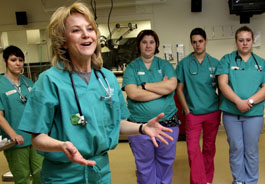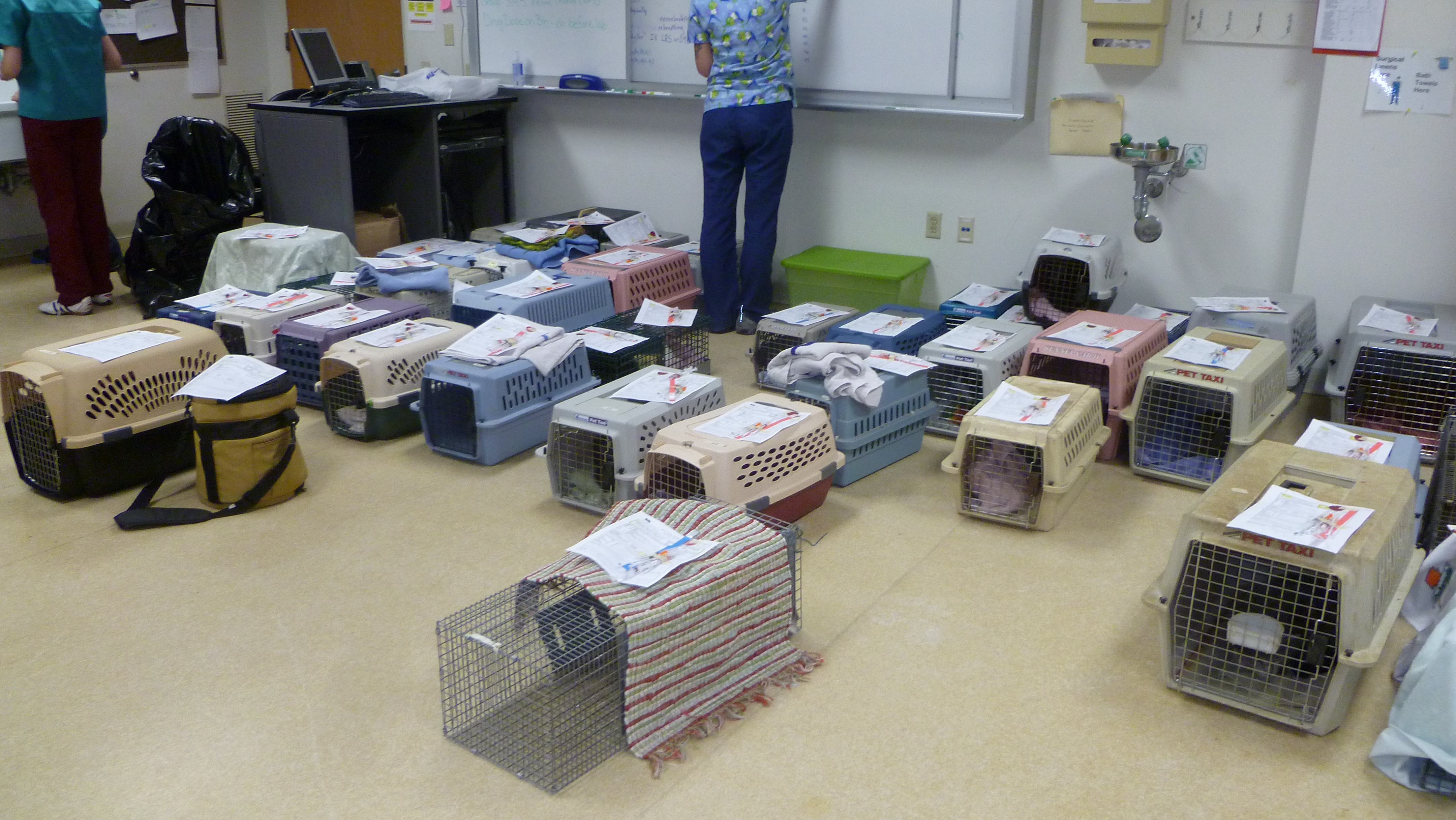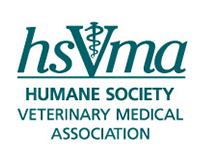Beyond the Call of Dutyby Susan Krebsbach, DVM February 7, 2012 My body was tired―but my mind was exhilarated! Being part of sterilizing 86 cats in one day takes its toll on ones physique, but this is more than compensated by the “Feel Good Factor” that comes with making such a valuable contribution to the community, educating the future of veterinary medicine, and, most importantly, promoting the well-being of the animals. It was February 12, 2011 and we had just completed our most successful “Spay/Neuterathon,” a monthly Trap-Neuter-Return (TNR) event organized by the Dane County Friends of Ferals, an organization dedicated to the health and well-being of Dane County Wisconsin’s feral cats, and hosted by Madison Area Technical College. Being just two days before Valentine’s Day, love was in the air―along with a healthy dose of playfulness.  Dr. Krebsbach speaks to students before the Spay Day 2011 event. Amber Arnold While romantic songs from David Cassidy and the Partridge Family played in the background, veterinarian-and-technician teams with names like "Hello Kitty," "Nutter Pluckers," "Castration Sensation," "Team Emasculators," and "Uterine Obliterators" competed for the most creative costumes and monikers. Silliness aside, the 64 volunteers―consisting of veterinarians, veterinary technicians, veterinary and veterinary technician students, and lay people―had a serious purpose: providing free and low cost spay/neuter surgeries and treatment for 86 feral cats. In addition to combating animal homelessness through sterilization, these events educate the future of veterinary medicine―veterinary and veterinary technician students―about pet overpopulation issues. It was just one of the more than 600 events held nationwide and 89 events internationally in honor of The Humane Society of the United States (HSUS) and Humane Society International 17th annual Spay Day. We had contributed to the 41,789 cats, dogs, and rabbits sterilized through this event―and it felt GREAT! Participation in Spay Day events is just one example of how veterinary professionals go beyond the call of duty, using our exclusive skills to help animals in need. Every day efforts are made to expand veterinary services to underserved populations of animals. Of course, many of us are struggling to balance workload, family and finances, but offering our services for even just one day per year, such as on World Spay Day, can reap tremendous rewards for the animals in your community, promote goodwill for your practice, offer potential tax benefits, and, of course, convey the “feel good factor” to all who participate. A report recently released by the HSUS’ Pets for Life (PFL) program highlights how critical our assistance is in meeting the needs of at-risk animals who might not otherwise ever receive any medical care. The report, "Pets for Life – A New Community Understanding", also explains how increasing access and removing cost barriers to animal care and veterinary services for pet owners in underserved areas will improve overall community animal health and reduce shelter overpopulation.  Cats awaiting surgery at the 2012 Dane County Friends of Ferals World Spay Day event. Susan Krebsbach, DVM Using data gathered from events organized by The HSUS Pets for Life team and local partners, representing close to 5,400 companion animals in 11 different markets, the report highlights innovative strategies and fresh approaches to extend the reach of animal services, resources, and information for the sake of building humane communities. Among the key findings in the report:
This report provides the heartbreaking evidence that so many people in underserved communities are struggling to care for their pets with little to no available basic health care and wellness resources. By working in collaboration with animal welfare organizations, veterinary professionals can ensure that all pet guardians have the information, resources, and services they need for their pets―and we get to feel good and have fun doing it! |
